 |
 |
 |
| |
Understanding HIV prevention from the perspective of
adolescent girls and young women at high risk of HIV infection
|
| |
| |
Presented at the HIVR4P, Virtual, 27-28 January and 3-4 February 2021
Presenter
Yolande Croucamp
Authors
S. Malone (1), A. Gomez (2), R. Prasad (3), A. Gangaramany (3), Y. Croucamp * (4), P. Kramer (5), J. Mulhausen (5), P. Noble-Campbell (5)
Institutions
(1) AVAC, PMM, New York, South Africa, (2) AVAC, PMM, New York, United Kingdom, (3) Final Mile, United States, (4) Final Mile, Research, South Africa, (5) Upstream, United States
BACKGROUND: Despite a decline in recent years, adolescent girls and young women (AGYW) in South Africa still have disproportionately high HIV incidence. This study analysed barriers and drivers of effective HIV prevention from the perspective of AGYW and co-created solutions with AGYW and other stakeholders.
METHODS: Multi-method research was conducted in 2018-2019 in KwaZulu-Natal and Mpumalanga provinces. We began with qualitative research incorporating ethnography, journey mapping and focus group discussion with 240 AGYW aged 15-24. Findings informed development of a quantitative survey with a random sample of 2069 AGYW, using cluster modelling analysis to derive actionable segments for future programs.The user-centred design phase began with a three-day workshop with 18 AGYW and 12 other stakeholders (funders, government, implementers) to prioritise challenges, generate ideas and prototype solutions. We then assessed solutions for desirability, feasibility and scalability, and synthesized several concepts into a single prototype for piloting by two implementing partners.
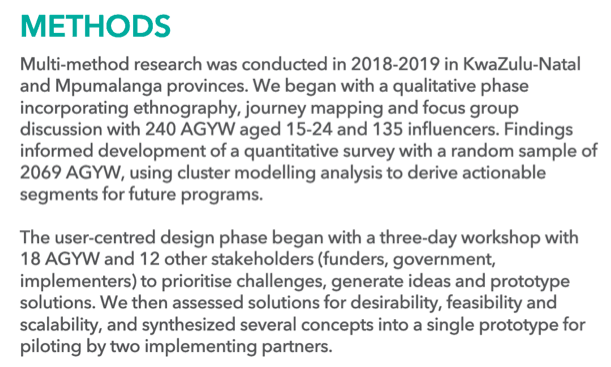
RESULTS: We found that AGYW at high risk of HIV infection prioritise relationship management over HIV prevention and reject HIV prevention strategies that may cause relationship conflict or tension. We further identified three distinct AGYW segments, diffierentiated by relationship needs, degree of control within relationships, HIV risk perception, and emotional associations with HIV.
We also mapped a five-phase relationship and sexual health journey, with the key milestone to stable, healthy prevention habits being the shift from focusing on external pressures and expectations to internal preferences and priorities.
Building on the nexus between HIV prevention and relationship management, AGYW and key stakeholders then co-created a 'relationship bootcamp' prototype to help AGYW progress through the journey by identifying characteristics of healthy relationships, navigating relationship challenges, and aligning relationship goals with HIV prevention. The intervention is tailored by segment and focuses on the earlier journey stages.
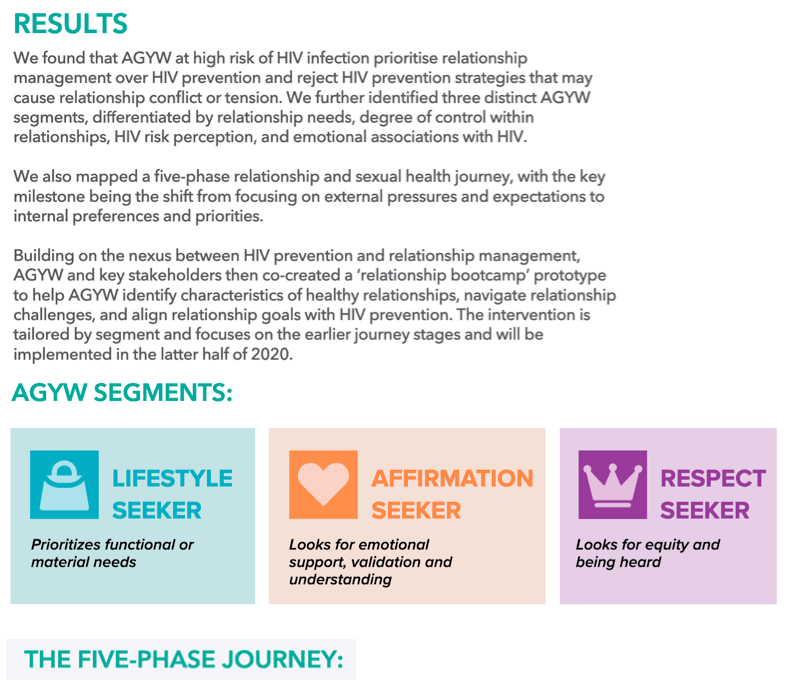
CONCLUSIONS: By acknowledging and aligning with AGYW relationship goals and tailoring approaches to differences among AGYW across segments and journey stages, we can increase the relevance of HIV prevention to high-risk AGYW and increase the likelihood of them forming a healthy mindset and developing stable, healthy habits in relation to sexual health including effective HIV prevention.
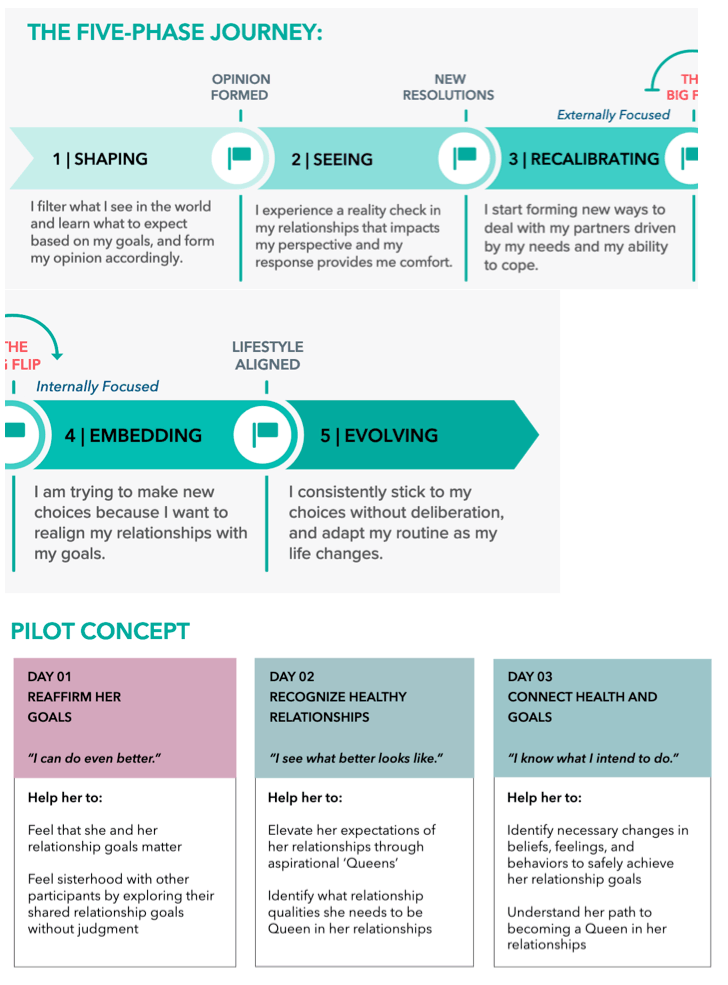
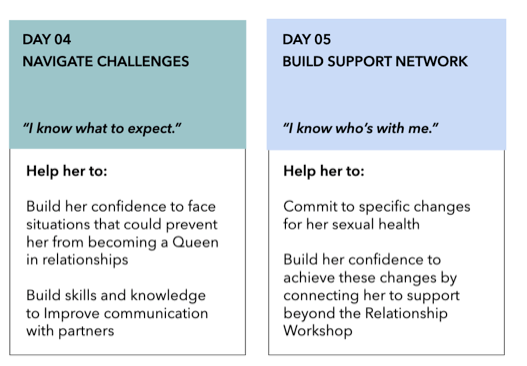
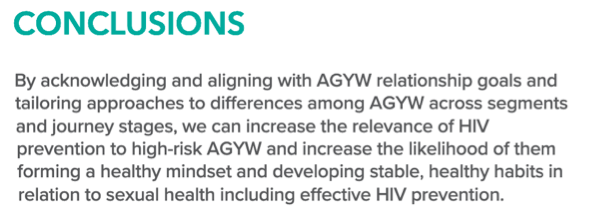
|
| |
|
 |
 |
|
|